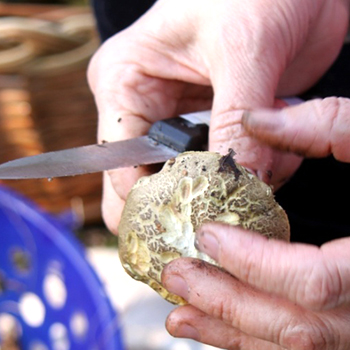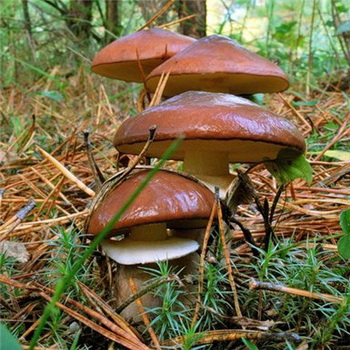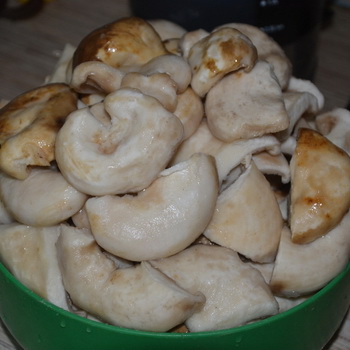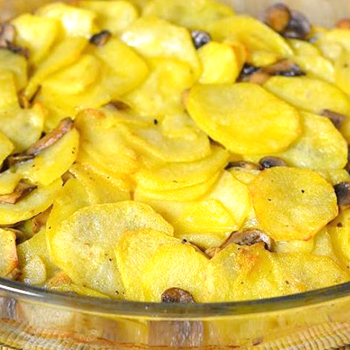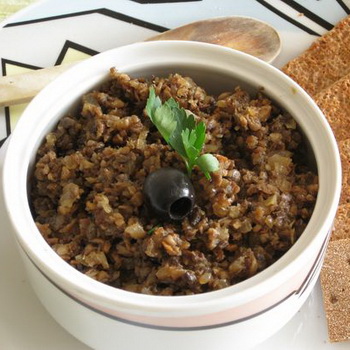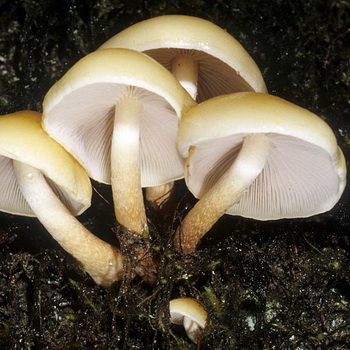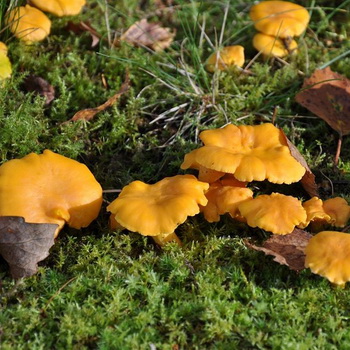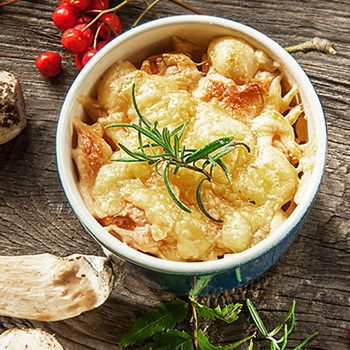Honey mushrooms that grow on the ground: photos of single mushrooms and their poisonous counterparts
 Everyone knows that mushrooms grow mainly on old stumps and trunks of fallen trees. For this feature, this species became famous in the mushroom "kingdom", therefore it received such a characteristic name. However, these fruiting bodies are not always found on stumps and dying trees. It happens that you can notice honey mushrooms on the ground.
Everyone knows that mushrooms grow mainly on old stumps and trunks of fallen trees. For this feature, this species became famous in the mushroom "kingdom", therefore it received such a characteristic name. However, these fruiting bodies are not always found on stumps and dying trees. It happens that you can notice honey mushrooms on the ground.
What mushrooms grow on the ground: summer and autumn mushrooms
For honey mushrooms, whole "queues" of mushroom pickers always line up, because they are very much appreciated in modern cooking. The growth of these fruiting bodies is widespread throughout the Northern Hemisphere and even in the subtropical zone. If we talk about the territory of the Russian Federation, then here mushrooms have also "captured" a fairly large area. But do honey mushrooms grow on the ground, because most of us are used to thinking that stumps and trees are the only places where they can be found.
Yes, this feature can be observed among some species of honey agarics. However, many often mistake them for poisonous counterparts, so they bypass them. In part, this is correct, because false mushrooms on the ground can be found much more often than on any trees and stumps. But if you arm yourself with the knowledge that helps to identify edible mushrooms from false ones, you can speed up the time of harvesting the next harvest. And knowing what mushrooms grow on the ground, you may be surprised that you completely undeservedly miss such areas with mushrooms.
So, for example, meadow honey grows exclusively on the ground, which is what differs from the spring, autumn and winter species. This fruiting body can be found in parks, courtyards and squares overgrown with grass. Of course, meadow honey often grows in meadows and forest edges. It can also be seen on the soils of village streets, pastures, along forest and field roads. In addition, this type of mushroom grows in large families, often forming so-called "witch circles". Meadow honeydew is small - about 5 cm in diameter. The cap of the mushroom is brownish-yellow in color, with a tubercle in the center and wrinkled translucent edges. The mushroom plates are rather wide, sparse, straw-colored. The leg is thin, stiff, so it is removed during cooking. The pulp is thin, yellowish, tender, has a pleasant smell. Meadow mushrooms begin to appear in June and grow until September. To see the meadow mushrooms that grow on the ground, the photo below will help:


However, sometimes many people confuse meadow honey with a whitewashed talker - a poisonous mushroom. In this case, you need to remember that the talker has a white hat without a wide tubercle in the center and frequent falling plates. In extreme cases, you can use your sense of smell. Gently (with gloves) pick the mushroom and smell it: edible honey fungus has a smell reminiscent of the aroma of cloves and bitter almonds, and the talker has an inexpressive taste and a mealy smell.
Meadow mushrooms growing on the ground are collected throughout the summer season, in some regions even the beginning of autumn is captured. I must say that this species is also distinguished by rich fruiting.
Another type of honey agaric that can be found on the ground is autumn honey agaric. However, it is very important to take into account one interesting feature. Everyone knows that this mushroom is the most common representative among other types of honey agaric. It inhabits almost 200 species of trees and shrubs. Most often it is a parasite that infects living and healthy trees, but it can also be a saprophyte, settling on dying and rotten trunks. Autumn mushrooms are indeed found on the ground, but they do not grow from the soil itself. I must say that this type of fruit bodies is not at all capable of growing out of the ground.The fact is that autumn mushrooms can freely settle not only on tree trunks, but also on roots. In addition, they grow on old fallen branches, which may be covered with leaves. Therefore, one gets the impression that the honeydew is growing out of the ground.


Pay attention to the photo of honey agarics on the ground. Sometimes they can take a liking to the root of a long-dead stump, which simply disappeared underground or was covered by autumn foliage.
In addition, mushroom "laws" do not forbid single mushrooms growing on the ground. Such situations sometimes happen, and this happens contrary to the generally accepted belief that they are inseparable. It is possible that when you meet a lonely mushroom on your way, you will make sure that it is an edible honey mushroom and put it in your basket.
What mushrooms that look like honey agarics grow on the ground?
This feature is not typical for false twins of autumn mushrooms. These mushrooms are able to grow simply on the soil, without the presence of any branches, trees or stumps nearby. Therefore, if you see that mushrooms similar to honey agarics are growing on the ground, stop and inspect the area. You may need to remove the foliage or slightly rip open the mycelium to make sure roots, rotting twigs, or rotting stumps are present. Be sure to look at the appearance of the mushroom and remember what features distinguish it from false doubles.
As for the other species of honey agarics - spring and winter, they grow only on stumps and trees. However, never take mushrooms that cause even the slightest doubt. It is very important to correctly distinguish edible mushrooms from inedible ones. Fruit bodies can only be taken when you are completely confident in them. In this case, the harvested crop will surely delight you with its exquisite taste and pleasant memories!

